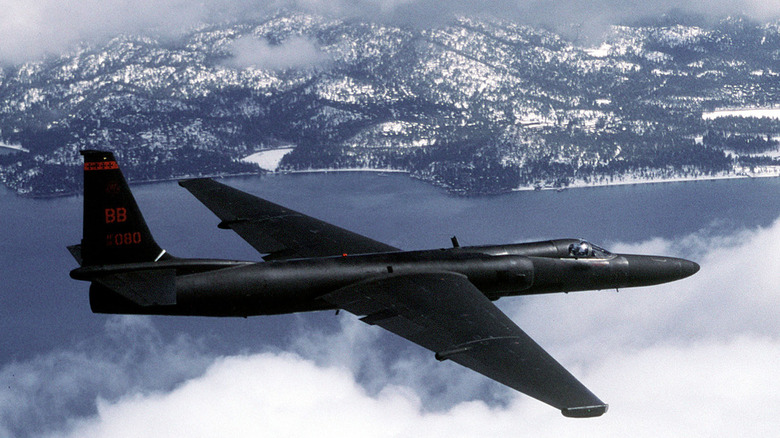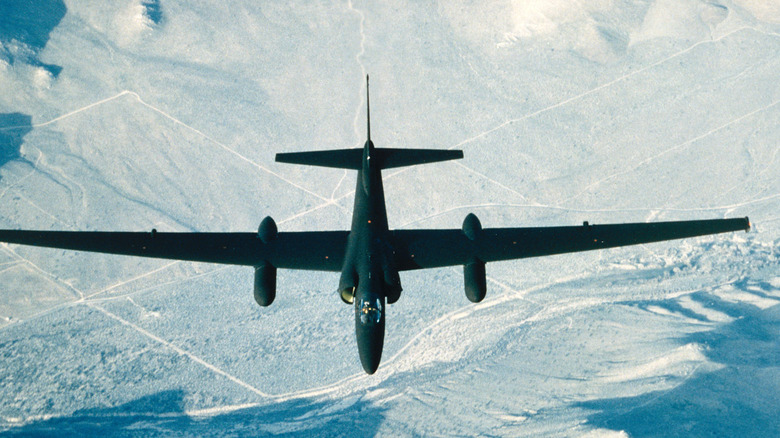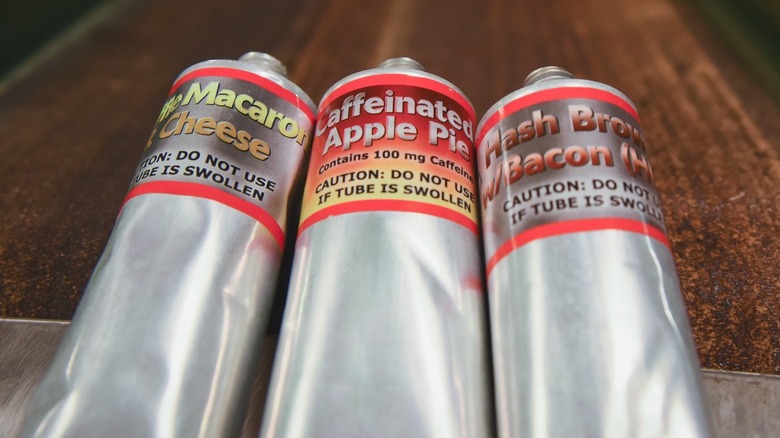How The US Army Uses Tech To Feed U-2 Spy Plane Pilots
There is a saying attributed to Napoleon Bonaparte which says, "an army marches on its stomach." In contemporary society, so do pilots, and those who fly the U-2 Spy Plane require a unique method to do so. The very nature of what the U-2 is — a high-flying, stealthy spy plane — often requires long missions between six and 12 hours. The pilots that fly these craft are, according to former U-2 pilot Lt. Col. Charles P. Wilson, "a very tough breed."
These pilots must be tough as flying the U-2 is difficult for even the best. They don pressured space suits to prevent the gasses in their body from boiling and bursting at high altitudes. The pilot then must fly the glider-like craft with its massive 105-foot wingspan up to a maximum altitude of 70,000 feet, while trying to balance its narrow stall to maximum speed window. Then once getting into position, the pilot has to constantly monitor the craft, while executing the mission and maintaining control. Somewhere along the way, you have to eat, but U-2 pilots cannot just swing by a drive-through. Thankfully a system has been developed and been in place for years that keeps them well-fed.
Eating in a U-2 is not that hard
Providing food based on the unique needs of U-2 pilots falls under the purview of the Combat Feeding Division with the U.S. Army Combat Capabilities Development Command Soldier Center, or DEVCOM SC. This unit, through its specialists and scientists, has been developing and perfecting the food requirements for U-2 pilots for nearly 60 years. Its division chief of Combat Feeding, Erin Stomberg, states, "The Combat Feeding Division has a long history of developing nutritionally optimized, good-tasting ration products to meet warfighters' unique needs and preferences."
The result has been the creation of what is called tube food. Tube food consists of 5 oz, aluminum squeeze tubes, much like your toothpaste at home, with a particular food flavor. There are 19 flavors, providing a taste of home with selections ranging from pears and hash browns with bacon to apple pie with caffeine. These tubes can be warmed using a small heater in the U-2 cockpit if the pilot wishes to make selections such as apple pie taste even better. To eat (or drink) the pilot attaches a straw to the tube and then runs the straw through the sealed feeding port on his helmet.
The top tube food preference is...
Scientists from Combat Feeding work closely with U-2 pilots to ascertain any needs as well as to facilitate feedback from the pilots. This has proven extremely helpful to the program, as "Face-to-face contact is essential to understand what products the pilots want," states food technologist and project officer, Daniel Nattress. Research, development, and user comments have led to tube foods that meet shelf life (three years at 80 degrees and six months at 100 degrees) and nutritional requirements while being able to be consumed through a straw.
Every pilot has different tastes, so when they are getting into their pressurized suits for a mission, their support technician will ask them what they want. Some pilots are creatures of habit and will have the same thing, others change it up. Thanks to the work of the Combat Feeding team, U-2 pilots have a wide range to choose from, whether it is key lime pie or sloppy joes. The top choice among most U-2 pilots? Caffeinated chocolate pudding.


